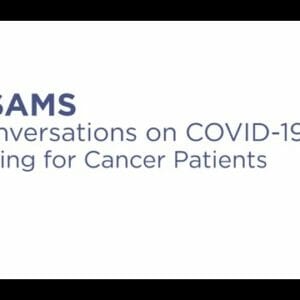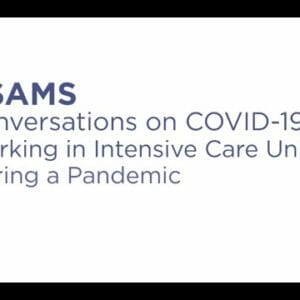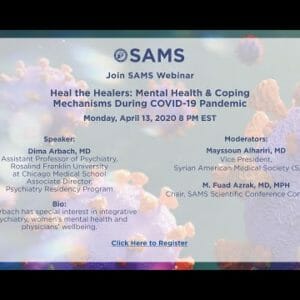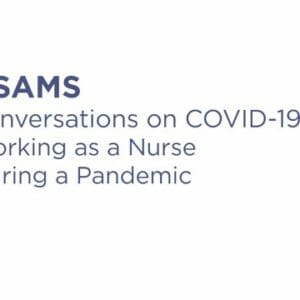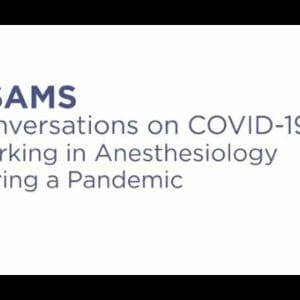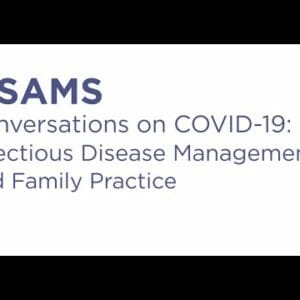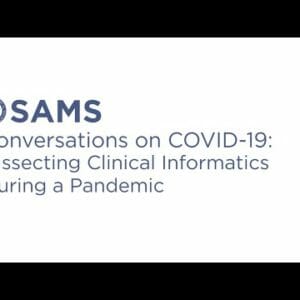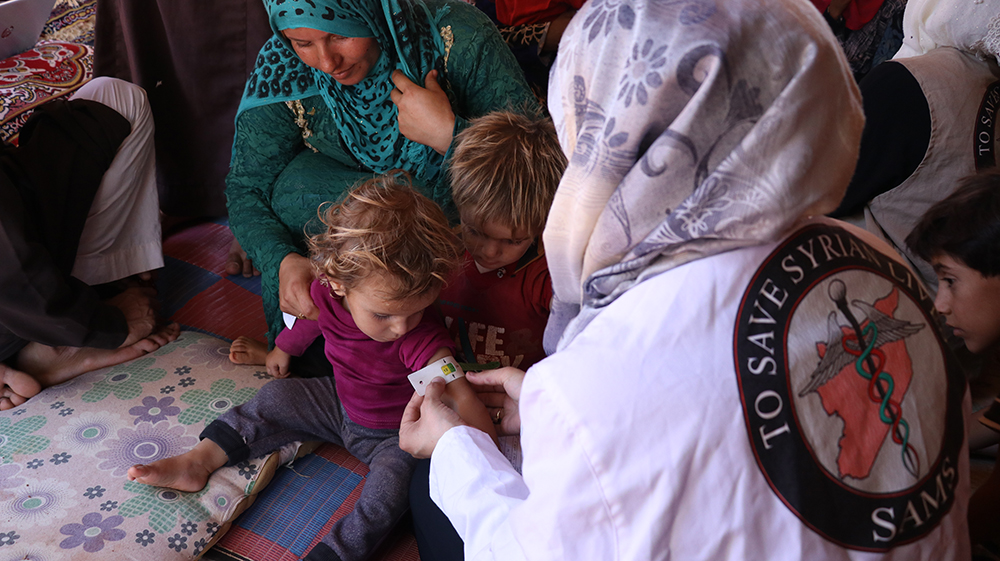What makes COVID-19 more serious than other respiratory infections?
The novel coronavirus, called COVID-19 or SARS-CoV, is a new strain of the coronavirus family that has impacted more regions and individuals than previous coronavirus epidemics. As of March 23, 2020, the World Health Organization reported 332,930 cases of COVID-19 in over 190 countries (and territories) across the globe including 14,509 deaths.
Past coronavirus outbreaks that heavily impacted human health include SARS-CoV (SARS) and MERS-CoV (MERS). SARS emerged in 2002 and impacted over 26 countries worldwide, with over 8,000 cases confirmed and over 700 deaths – a case-fatality rate of approximately 7%. Likewise the MERS epidemic surged in 2012, impacting 27 countries, and has since caused 2,494 confirmed cases and 858 deaths causing death of 34.4% of the confirmed cases.
The Centers for Disease Control (CDC) and the World Health Organization (WHO) characterized the COVID-19 outbreak as a pandemic. While the case-fatality rate for COVID-19 (0.25% – 3.0%) is lower than other coronavirus epidemics, the global impact is significantly larger as shown in total case numbers, total deaths, and the rapid spread of the virus.
While research on the novel coronavirus is still ongoing, there appear to be various factors that make the COVID-19 pandemic a very concerning challenge:
- People may be infected without knowing as some cases don’t show symptoms. This means that people who think they are healthy, may have the disease and spread it to healthy individuals unknowingly.
- The time between infection and showing symptoms (incubation period) is longer than in other infections. This also accelerates the spread of the virus, as even cases who eventually show symptoms may spread the virus unknowingly in the time between being infected and developing symptoms.
- COVID-19’s rapid spread across the globe requires more countries and governments to enact policies aimed at suppressing and stopping the spread.
- While the common flu is transmitted in a similar manner to COVID-19, the coronavirus often causes respiratory failure and, in general, requires more resources than the common flu.
What are the symptoms of the Coronavirus? Where can I get tested?
The symptoms of the novel coronavirus include but may not be limited to:
- Fever
- Dry Cough
- Fatigue
- Headache
- Sore throat
According to the CDC, the following symptoms are considered emergency signs for COVID-19:
- Difficulty breathing and/or shortness of breath
- Persistent pain and/or pressure in the chest
- New confusion
- Bluish lips
Please consult your medical provider immediately if you experience these or any other symptoms that are severe or concerning.
What should I do if I feel ill?
The most common symptoms of COVID-19 are fever, fatigue, a dry cough, and shortness of breath in severe cases. The World Health Organization (WHO) also states that some patients may have aches and pains, nasal congestion, runny nose, sore throat or diarrhea.
If you are feeling ill and experiencing any of the above symptoms:
- Call your doctor and follow their instructions as well as your local health authority’s instructions
- Stay home
- Isolate yourself from other people and pets in your home
- If your illness worsens (difficulty breathing, increasing fever, etc.), call your doctor immediately and follow their instructions
- Use a mask, cover your coughs and sneezes, and wash your hands often for at least 20 seconds each time
- Avoid sharing personal items. Contaminated high-touch surfaces should be cleaned by your caregiver. The caregiver should wear a mask and gloves and dispose of contaminated materials in a lined receptacle. For bathroom cleaning, the caregiver should wait as long as possible from when the sick individual entered the contaminated space
- Reach out for support from family and friends. Set up daily check-ins (via the phone or the internet) with your support network. Reach out to your local health department for mental health resources. For individuals living in the US, you can reach out to the Substance Abuse and Mental Health Services Administration’s (SAMHSA’s) Disaster Distress Helpline: 1-800-985-5990 or text TalkWithUs to 66746. (TTY 1-800-846-8517)
What should I do if I have a previously scheduled routine doctor appointment?
If you have a medical appointment, call your doctor’s office ahead of time and inform them if you have or may have COVID-19. This will allow the office to prepare and protect themselves and other patients. If possible, wear a mask before entering the office, and maintain at least 6 feet of distance between you and other people.
Why do different individuals respond differently to infection with Coronavirus?
Not much is known about the novel coronavirus and its interaction with the immune system. However, it seems that the virus affects individuals differently according to their age and pre-existing medical conditions. Some early research suggests that while children are just as likely to be infected as adults, they are less likely to display severe symptoms. By contrast, elderly individuals and/or those with underlying health conditions are known to be the most at risk.
What are the top 5 myths of coronavirus?
- Heat, humidity, or cold kill COVID-19
- Antibiotics and pneumonia vaccines can help protect against the coronavirus
- Saline rinses or spraying your body with alcohol,chlorine, essential oils, etc., also help
- Ordering or buying products shipped from China will make you sick
- Healthy people should wear face masks to protect themselves from COVID-19
How to cope with the Coronavirus?
The outbreak of coronavirus disease 2019 (COVID-19) may be stressful. Given the danger of the virus, the loneliness from isolation, and the changes and uncertainty in daily life, it is completely normal if you are feeling worried, afraid, frustrated, sad, lonely, or low. The following tips might help you, your loved ones, and your community cope with stress and stay strong through these difficult times. Based on CDC guidelines, we recommend that individuals and communities consider the following for managing strong emotions.
- Know that everyone reacts differently to stressful situations. Strong emotions like fear, anxiety, helplessness, anger, and sadness are a normal response to the uncertainty and fear around infectious disease outbreaks.
- If you or someone you know, are experiencing feelings of self-harm, harming others, or overwhelming distress, please immediately call 911 or other local emergency response number:
- Crisis Hotline by texting HOME to 741741 (US ONLY)
- Suicide Prevention Hotline at 1-800-273-8255 (US ONLY)
Things you can do to support yourself (CDC Recommendations):
- Take breaks from the news and set boundaries on screen time. Hearing about the pandemic repeatedly can be upsetting.
- Nourish your body with deep breaths, exercise, healthy meals, and plenty of sleep. Taking care of your body often helps reduce distressing feelings.
- Make time to unwind. Try to do some other indoor activities you enjoy.
- Talk with people you trust about your concerns and how you are feeling.
- Call your healthcare provider if stress gets in the way of your daily activities for several days in a row.
- Being informed about the facts about COVID-19 helps reduce fear and uncertainty. You can find updated information on the CDC website and through your local health authority.
- Be kind to yourself, and remember it’s normal to feel down during these times. It’s ok to take breaks when you’re feeling overwhelmed.
How to prevent the spread of the Coronavirus?
Social Distancing & “Flattening the Curve”:
COVID-19 is a highly contagious virus that can be transmitted by droplets (coughs and sneezes) and contact with contaminated surfaces. Some studies have shown that the virus can be aerosolized, or survive in the air, for up to three hours; however, this seems to only happen during specific hospital procedures. Some people who have the virus might not show symptoms, but can still spread the virus to healthy individuals.
What is the Curve?
The “curve” refers to an estimate of the number of people who may contract COVID-19 over a period of time. These numbers are estimates and projections based on the current information known about COVID-19.
What is “Flattening the Curve”?
“Flattening the Curve” refers to various methods that we as individuals and a community should practice to slow the spread of COVID-19.
Why do we want to “Flatten the Curve”?
There are two main problems if we don’t “Flatten the Curve”:
- The disease can spread rapidly, infecting large percentages of the community
- The healthcare system may be overwhelmed by the number of cases infected during a small time period.
The curve above shows two scenarios:
- (Dark Purple) The natural timeline and numbers of cases of an epidemic if no steps are taken to prevent the disease from spreading
- (Patterned Light Purple) The timeline and numbers of cases of an epidemic if steps are taken to prevent the disease from spreading quickly, called “Flattening the Curve.”
When the rate of transmission is lowered, fewer people will be infected, the spread will slow, and the healthcare system will be able to take care of those who get sick.
The best scenario is called “suppression” which aims to stop the spread of the virus entirely, reducing case numbers to low levels, taking off pressure from the healthcare system to a level it can handle.
How do we flatten the curve?
- Follow your local health authority’s mandates, recommendations, and guidelines. This may include mandatory curfews, orders to stay home, school and work closures, and other preventative measures. When more individuals contribute to slowing transmission, fewer individuals will get sick, and the virus’ impact will be lessened.
- Practice social distancing:
- Stay at home as much as possible.
- Avoid contact with anyone who is displaying symptoms of coronavirus (COVID-19). For best results, healthy individuals should also practice social distancing as much as possible, even with other healthy individuals, as the virus can spread even if someone doesn’t have symptoms
- Avoid non-essential use of public transport, varying your travel times to avoid rush hour, when possible
- Work from home, where possible. Employers should support their employees in these arrangements
- Avoid gatherings, even in smaller public spaces such as pubs, cinemas, restaurants, theatres, bars, clubs
- Avoid gatherings with friends and family. Keep in touch using remote technology such as phone, internet, and social media
- Use telephone or online services to contact your doctor or other essential services
We all have a part to play in keeping ourselves and our communities safe. We can get through this together by following the steps to “Flatten the Curve.”
What is SAMS doing in response to the COVID-19 outbreak?
SAMS is uniquely positioned to respond to this health emergency, given our networks of healthcare professionals and volunteers in the United States, in Syria and in neighboring countries.
SAMS is currently coordinating with local and national health organizations to:
- Improve surveillance, communication, and reporting among stakeholders;
- Conduct risk assessments to prioritize the location of activities and identify the required resources needed for any potential response;
- Increase community awareness about the virus and how to prevent its spread;
- Prepare medical and non-medical staff on prevention, detection, response, and treatment;
- Bolster existing infection, prevention, and control (IPC) measures in our existing facilities;
- Pre-position appropriate personal protective equipment (PPE) for our staff to screen and respond; and
- Establish quarantine/isolation units within health facilities.
To learn more about our response to the COVID-19 pandemic, please visit our website here.



